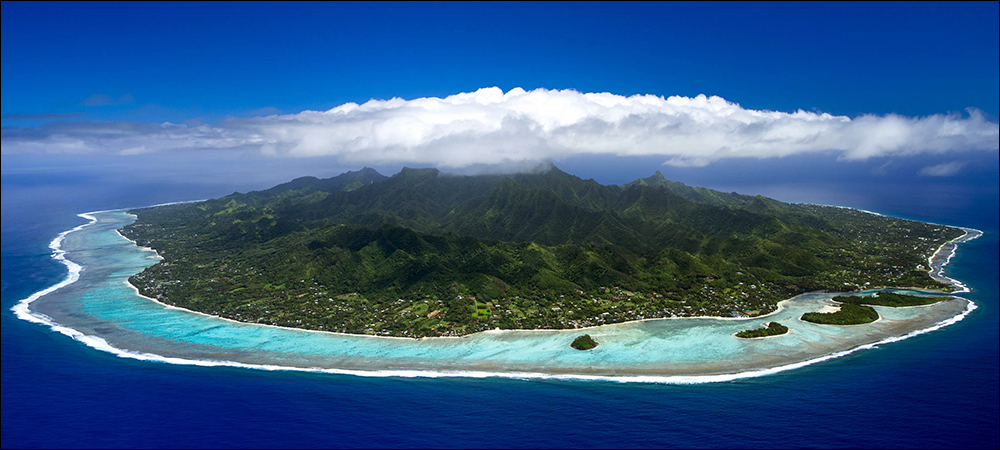- Deploying LoRaWAN, Solar Sensors on Remote Islands
- Tracking Conditions in Real Time and Building Analytics
- Satellite Network Could Expand Network to More Islands
New Zealand technology company IoT Ventures is targeting water shortage management on remote islands, with a long-range wide-area network (LoRaWAN)-based solution that will soon include satellite connectivity. The solution forwards water tank-level information from the most remote locations. The goal, according to the company, is to provide data from water-containment sites related to fill levels, to help managers understand and respond to potential shortages. The LoRaWAN connectivity is provided by Semtech chips built into the sensors and gateways.
The end-to-end water-monitoring solution is particularly aimed at communities in relatively isolated locations, either on the mainland or on islands. The system has so far been tested in New Zealand, and the company is now rolling it out on islands in the South Pacific, with support from Engineers Without Borders New Zealand and the New Zealand Ministry of Foreign Affairs and Trade. The Cook Islands are an island country comprising 15 islands and a total land area of approximately 240 square kilometers (93 square miles). The islands are widely dispersed, with the nation covering 1.9 million square kilometers (736,000 square miles).

The Cook Islands
The islands typically rely on rain collection as their water source, with rain captured in tanks and reservoirs for the populations living on each island. Water levels are of critical importance in the event of a drought. If a community runs out of water, it may need to wait for the Cook Islands government to bring relief via water-filled tanks traveling by ship. And the risk of water shortages on the islands has been increasing with climate change. Thus, the challenge is not only to respond quickly to a water crisis, but to prevent one.
Beyond the Cook Islands national government, other interested parties include the New Zealand government, which supports some islands, as well as local water managers one each land mass. All of these parties are collaborating to improve community resilience to water shortage, and they strive to keep track of how much water is available. Water-level detection can be crucial for warning the public, as well as for planning responses to droughts. Therefore, IoT Ventures has been developing, testing and now deploying a solution that measures community and residential water levels for each specific tank, says Matt Hector-Taylor, IoT Ventures’ director.
Deploying LoRaWAN, Solar Sensors on Remote Islands
IoT Ventures was formed in New Zealand in 2016. The company designs solutions that include software, LoRaWAN-enabled end devices and gateways to manage data for a variety of applications, ranging from water management and irrigation to grain silo monitoring, as well as a horse wellness monitoring solution and a boat security system. LoRaWAN is a wireless network protocol that leverages sensor terminals to transmit data to gateways, which then send data packets to a server, typically via a cellular connection such as 3G.
The company exclusively provides LoRaWAN technology to solve problems that require the kind of connectivity that typically accomplishes a read distance of five to 10 kilometers (3.1 to 6.2 miles), with packets containing 292 bits to 50 kilobits of data. “We only look for problems where LoRa [connectivity] is best suited,” Hector-Taylor says. Thus, IoT Ventures seeks out opportunities that cannot easily be solved using other technologies. “When we get an idea and we’ve been through a whole rigorous analysis process, and LoRa is the best answer, then we go with that.”

Matt Hector-Taylor
The island water-management solution falls into this category, as IoT Ventures aims to provide a long-range, wireless system that can include solar-powered gateways, and which can be low in cost and easy to deploy. After piloting the solution in New Zealand communities beginning in 2019, the company began planning the solution for the Cook Islands, including the country’s largest island, Rarotonga. Sensors are deployed where water is collected, and a single island may store its water in numerous 40,000- or 80,000-liter (10,570- or 21,130-gallon) community tanks, or in small reservoirs. In some cases, the water is stored in residential tanks that might store around 5,000 liters (1,320 gallons).
IoT Ventures offers sensor devices that can be used in a variety of water-containment tanks. According to the company, these devices are about the size of a pack of cigarettes for larger tanks, or a pad of small Post-it notes for residential sites. The sensors are typically mounted on top of a tank, use a built-in solar panel for power, and come with an IP67-rated enclosure to withstand weather, along with a connected depth-monitoring pressure sensor that is lowered into the tank. The sensors measure the water level approximately every hour, then use the built-in LoRaWAN chip to forward the data to a gateway, where another LoRaWAN chip receives the transmission. A solar-powered LoRaWAN radar device is used on smaller residential tanks.
With the solar panel in use, each sensor device can be expected to operate for more than 10 years without requiring intervention. IoT Ventures typically works with Engineers Without Borders New Zealand and local governments or communities to deploy the system and access the data. The company also partners with the government’s Infrastructure Cook Islands department, and it trains members to install the devices and base stations. Usually, each deployment requires one or two gateways for full island coverage. The gateways forward water level-based data packets to the cloud-based IoT Ventures software via a cellular connection.
Tracking Conditions in Real Time and Building Analytics
IoT Ventures’ software provides information regarding water levels for authorized parties on a dashboard, providing a real-time view. It can also forward alerts to managers if water levels become too low. With real-time alerts, managers can respond with the appropriate actions, which could include sending backup water or warning townspeople to reduce water consumption to prevent an outage. In addition, IoT Ventures reports, the analytics feature could help governments plan for and even prevent future drought events.
The software conducts historical analytics to help mangers predict water levels going forward. Data such as weather forecasts can be applied to other algorithms in order to identify when water might run out. The data captured by IoT Ventures’ solution is also expected to help meteorologists and government officials better understand weather patterns and water usage rates in places where weather forecasting is less reliable. “There’s a whole lot of work being done to improve weather data,” Hector-Taylor states, “and so we take [weather data] inputs, while we also contribute by filling in data gaps [for instance rainfall data].”
While the technology is now live on three of the Cook Islands, more deployments are being planned. Beyond the Cook Islands, Hector-Taylor says, “We expect to start to move into new countries next year as well.” The company compares the solution to a distributed supervisory control and data acquisition (SCADA) system, by which sensors at remote locations can be managed as part of a single network, enabling both the monitoring of conditions and the issuing of controls to those devices.
“We started off with quite a narrow scope,” Hector-Taylor recalls, “which was residential and community water tanks, and drain levels for drought.” In the long run, however, the solution can provide value for other infrastructure challenges, he says. For instance, when water levels drop, salinity becomes a potential problem that could require preventative measures if saline levels were to grow too high. Some managers may want to use sensor data to monitor water tables on each island, enabling them to understand when wells and other types of water-containing infrastructure might need to be added.
Satellite Network Could Expand Network to More Islands
The next development for IoT Ventures is to employ a satellite option for the most remote locations where cellular connectivity may not be available. With low-Earth orbit (LEO) satellites that employ LoRaWAN transmission, data can be forwarded to a server every time a satellite is within range. IoT Ventures and Semtech are partnering with satellite technology company Lacuna Space to provide connectivity LEO satellites as they pass. The gateways’ Semtech LR1120 chip can already accomplish both cellular and satellite transmission, the companies note.
IoT Ventures intends to have the first technology trial underway this fall, which will involve forwarding data via satellite from one of the Cook Islands, with full production of the technology slated for before the end of this financial year. To date, the smallest island using the technology has about 80 people, around 20 water tanks and 20 IoT Ventures devices. On other islands, several hundred such devices are now being rolled out.
Since its installation, the technology has detected several problems, including a water tank leak on one of the islands, which it discovered based on an unexpected drop in fill level. The community was thus able to address the issue before a significant amount of water could be lost. With the technology, Hector-Taylor speculates, “I think infrastructure management people feel a lot more comfortable about the state of things,” since they can now keep an eye on conditions across the expanse of the nation’s islands.
Key Takeaways:
- IoT Ventures’ LoRaWAN-based sensors, with satellite or cellular connectivity, can bring visibility into the fill levels of water tanks in the most remote Cook Islands, or at other sites, as well as warn citizens and officials about water problems during droughts.
- In the long term, the technology will help both federal and local officials better strategize water usage by predicting consumption based on the collected data.

